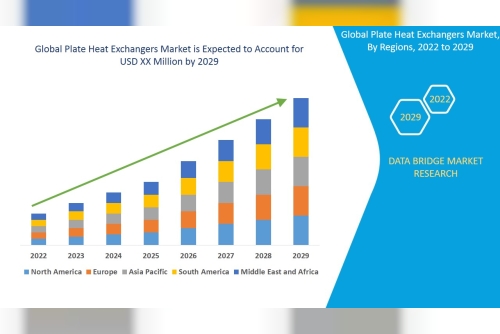The United Nations (UN) forecasts that approximately 68% of the global population will reside in urban areas by 2050. According to the Population Division of the UN Department of Economic and Social Affairs (UNDESA), the urban population stood at 4.2 billion in 2018, and it is expected to reach 6.7 billion by 2050. Thus, the increasing urban population, owing to the ample employment opportunities offered in urban areas, is leading to the construction of numerous housing units. The surging number of housing projects is creating a huge requirement for water pumps, worldwide.
For more insights:- https://www.psmarketresearch.com/market-analysis/water-pump-market
Moreover, the depleting groundwater levels and worsening water quality are also expected to fuel the water pump market at a CAGR of 5.9% during 2016–2022. According to P&S Intelligence, the market generated $42,435.1 million revenue in 2015. For instance, the "Composite Water Management Index" by the National Institution for Transforming India (NITI) Aayog states that around 600 million people in India are experiencing high-to-extreme water stress. Moreover, according to the NITI Aayog, the groundwater reserve of India stands at 433 billion cubic meters (BCM).
At present, Gardner Denver Inc., Torishima Pump Mfg. Co., Grundfos Holding A/S, Sulzer Ltd., Ebara Corporation, ITT Corporation, KSB Aktiengesellschaft, The Weir Group PLC., Kirloskar Brothers Limited, and Flowserve Corporation are manufacturing centrifugal water pumps and positive displacement water pumps for their clientele. A centrifugal pump refers to a rotodynamic pump that uses a rotating impeller to increase the flow and pressure fluid. Whereas, positive displacement water pumps help in increasing efficiency and viscosity of liquids by coercing fixed volume of fluids through the inlet pressure section of pumps into discharge zones.
Water pumps are used in the water and wastewater, oil and gas, chemical, and energy industries due to the extensive volume of fluids used by these end users. In contemporary times, water and wastewater treatment plants deploy the highest quantity of water pumps, owing to the soaring urban population, mounting government focus on irrigation activities, especially in African and Asian nations, and increasing number of drinking water schemes. Moreover, the rising volume of toxic pollutants in water bodies, on account of rapid industrialization, also encourages the deployment of water pumps in water and wastewater treatment plants.
Geographically, Asia-Pacific (APAC) led the water pump market in the preceding years, due to the soaring disposable income of people and escalating industrialization in the region, especially in India and China. In this region, China adopted the highest number of water pumps due to the expanding energy, chemical, and oil and gas industries. Whereas, India will adopt water pumps at the highest rate in the forthcoming years, owing to the surging number of housing and commercial projects in the country.
Therefore, the booming urban population and the depleting groundwater reserves will fuel the adoption of water pumps, across the world.












